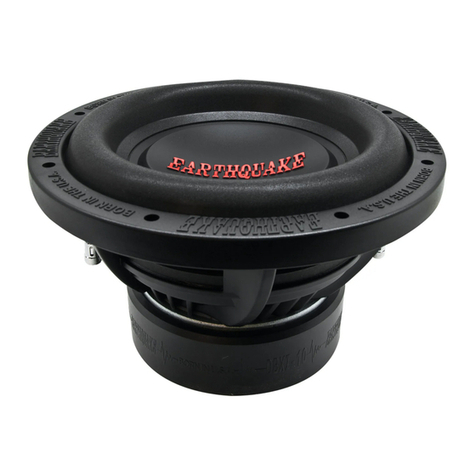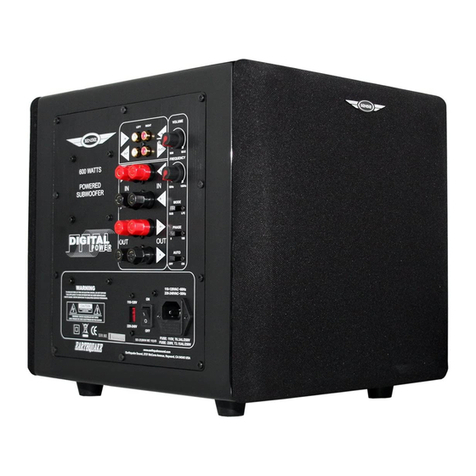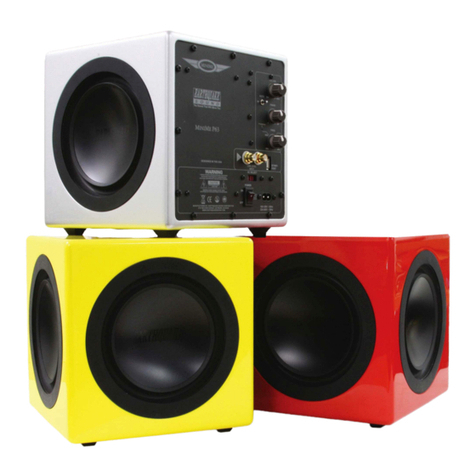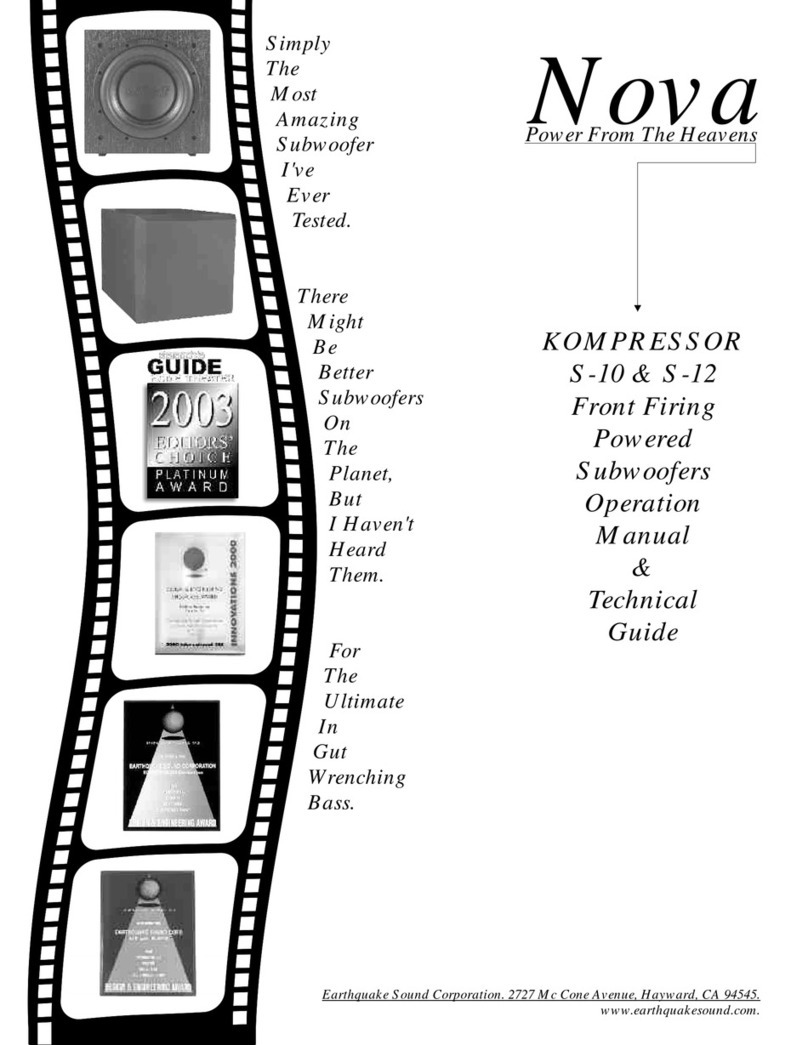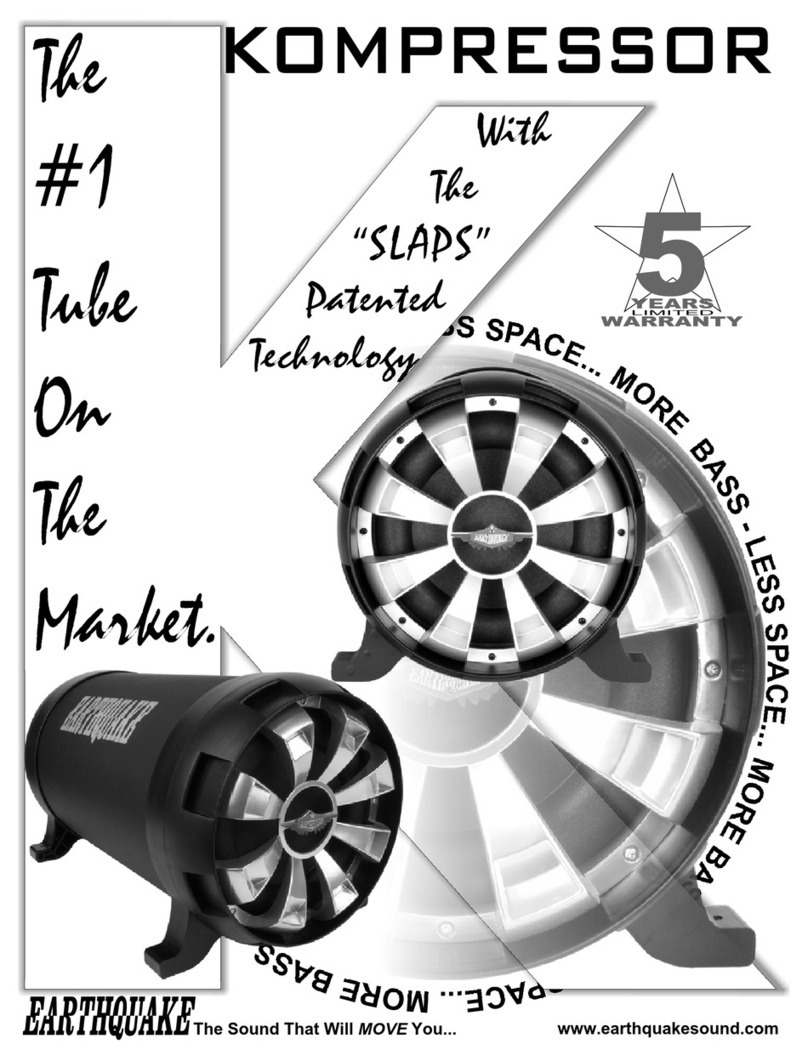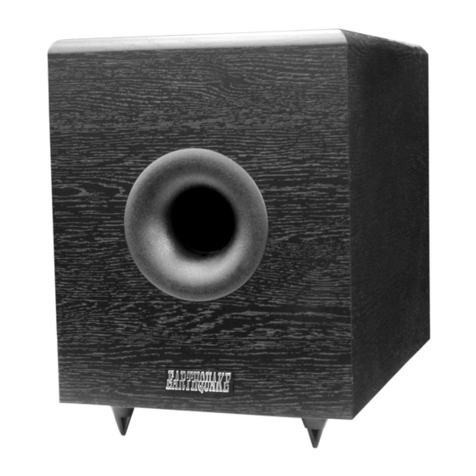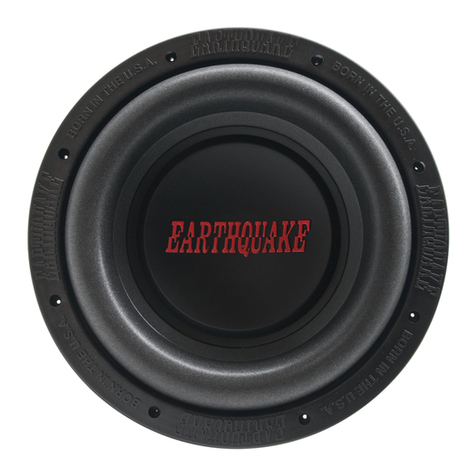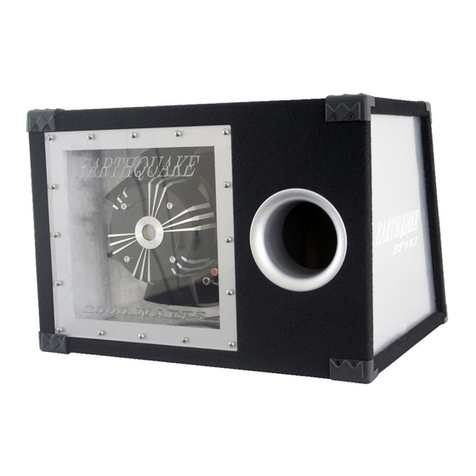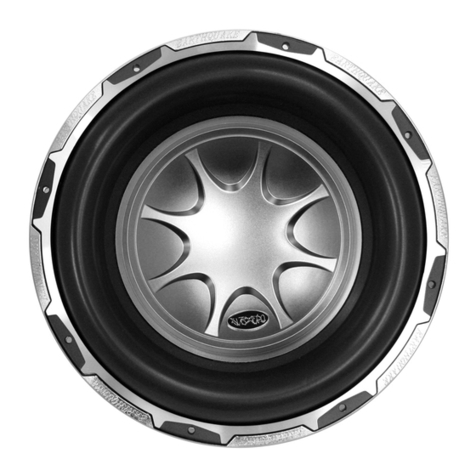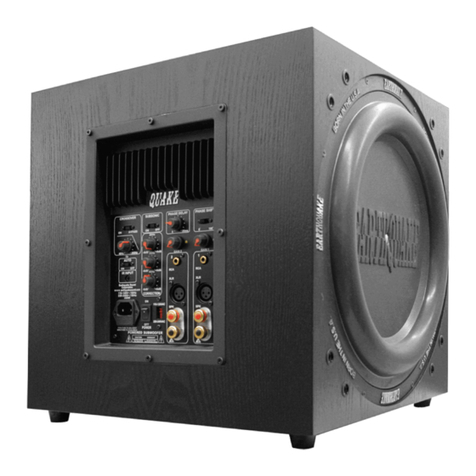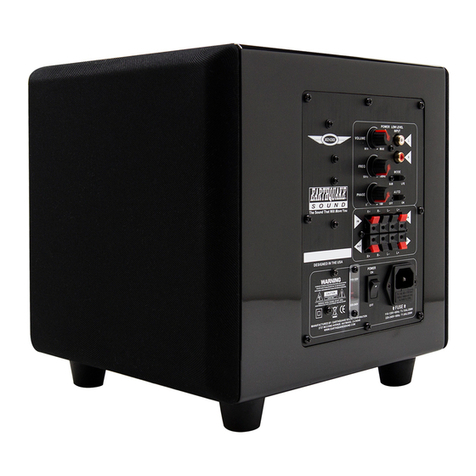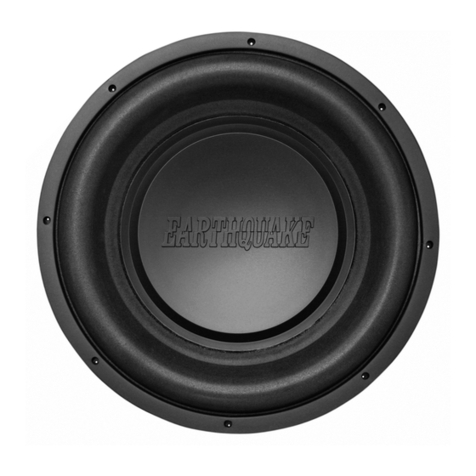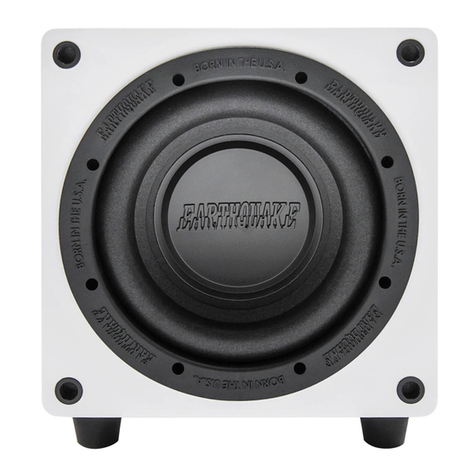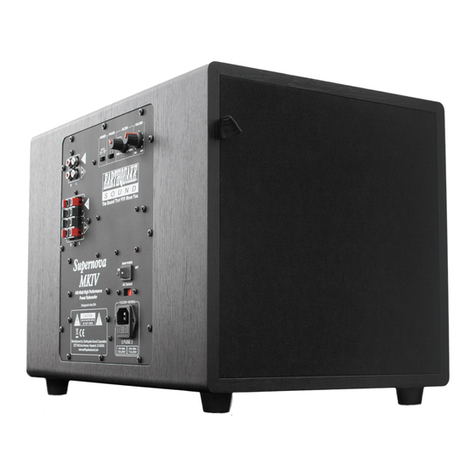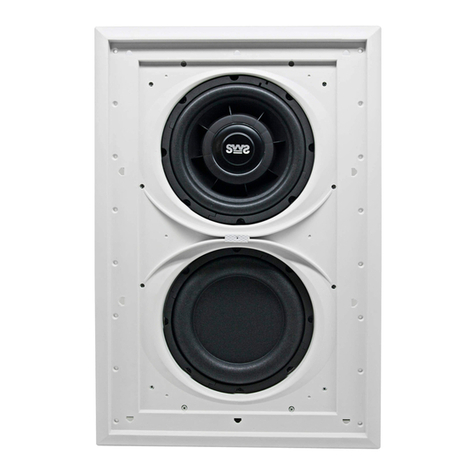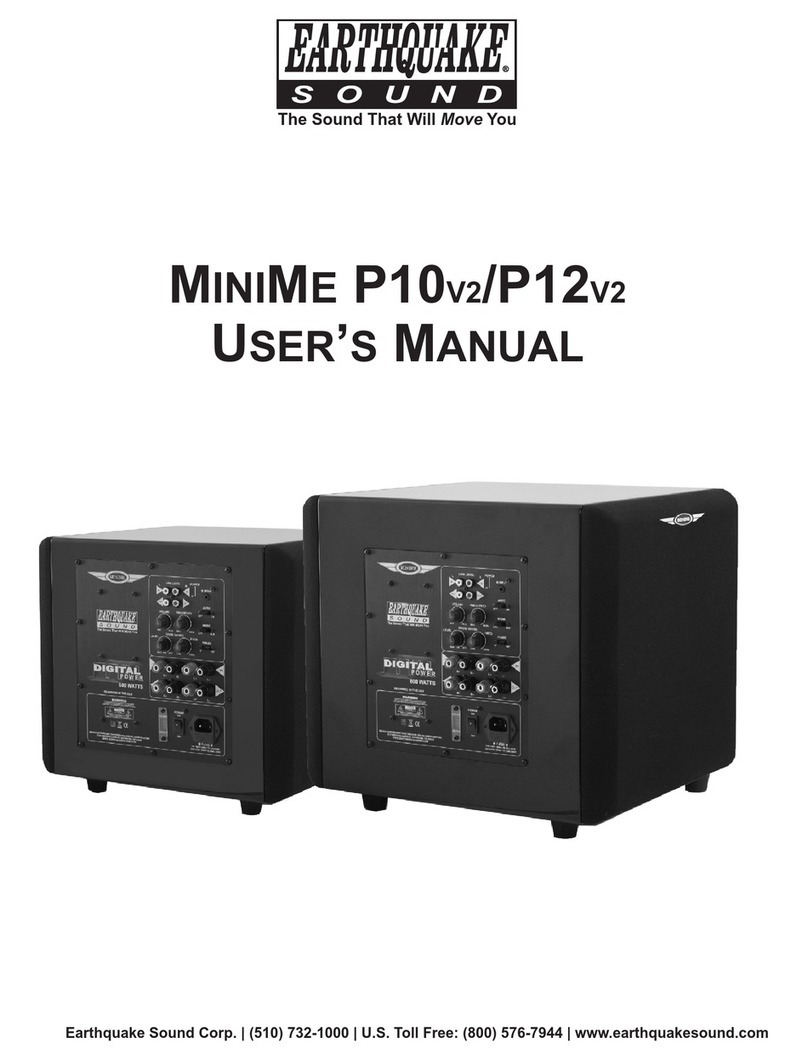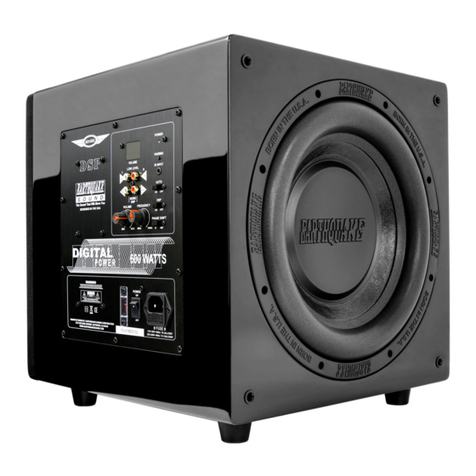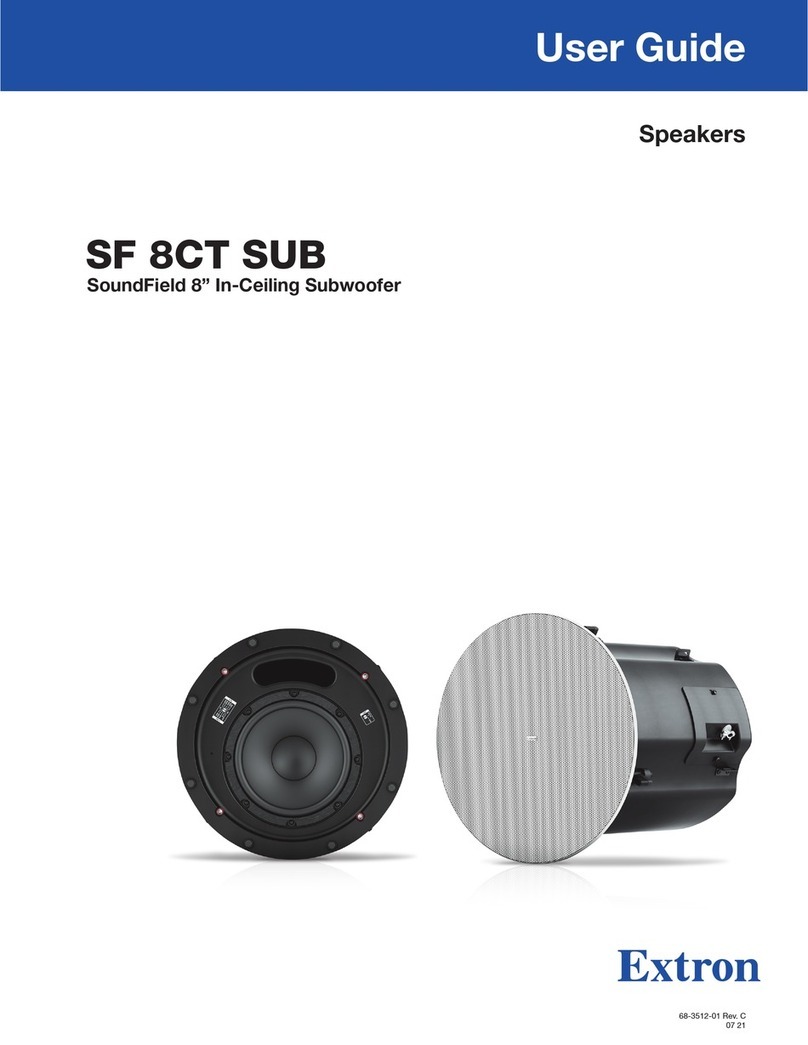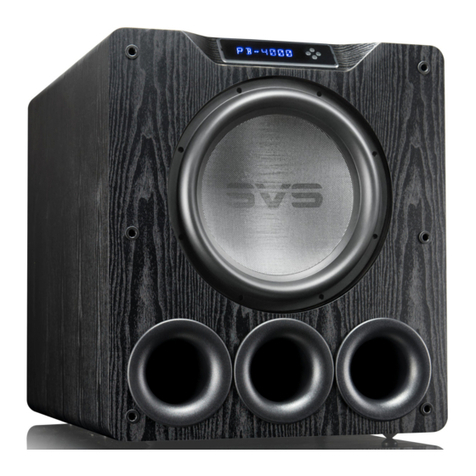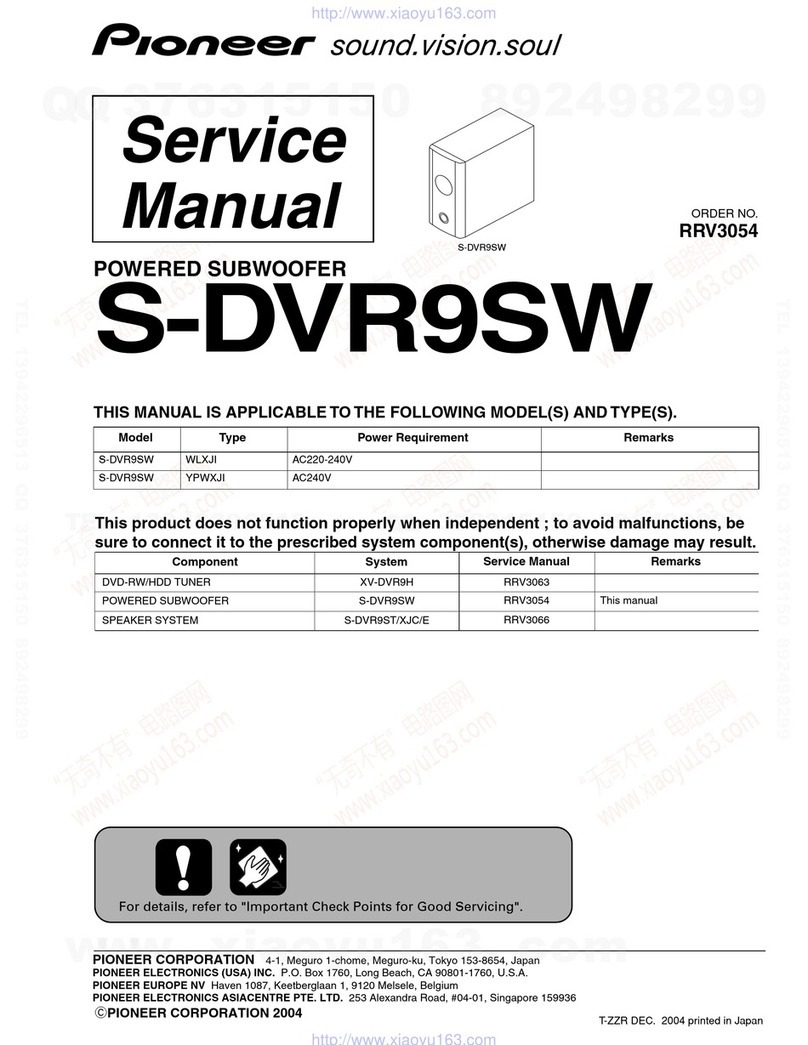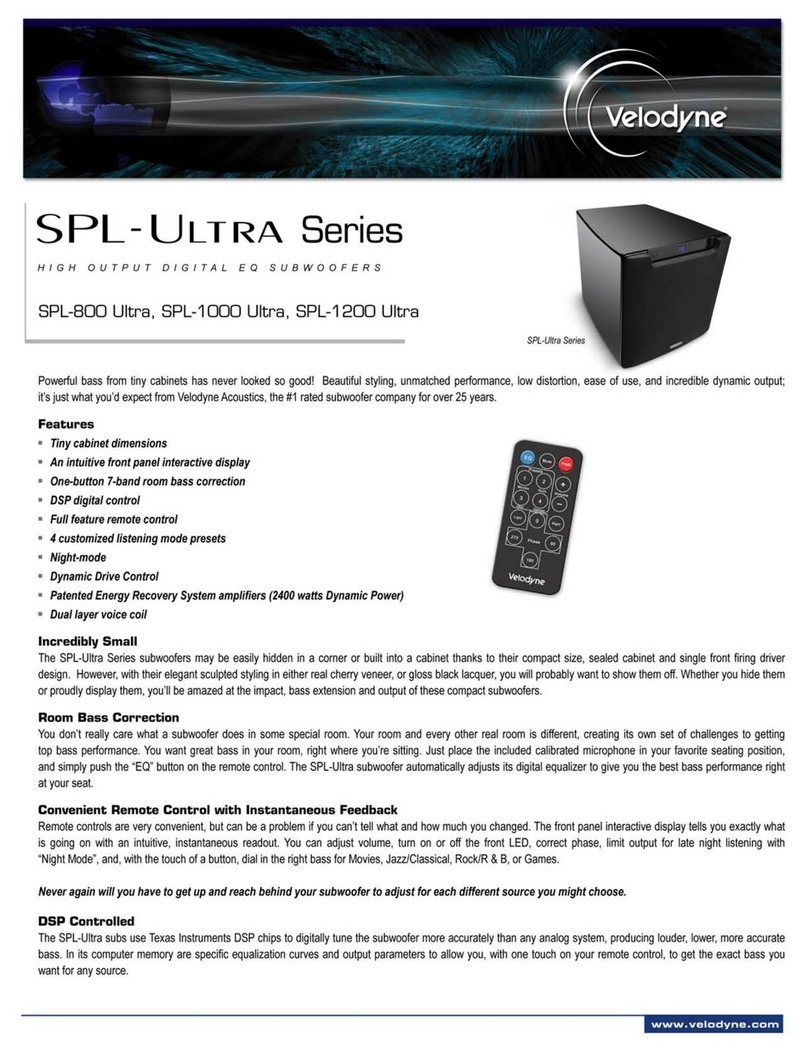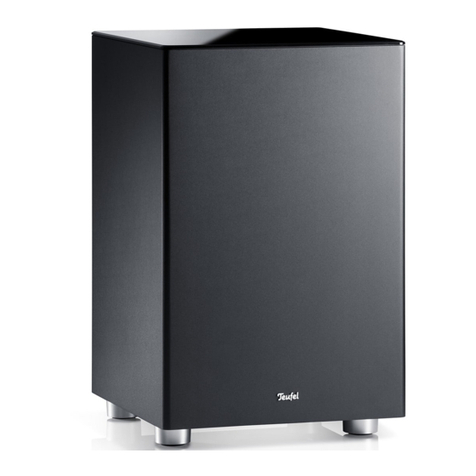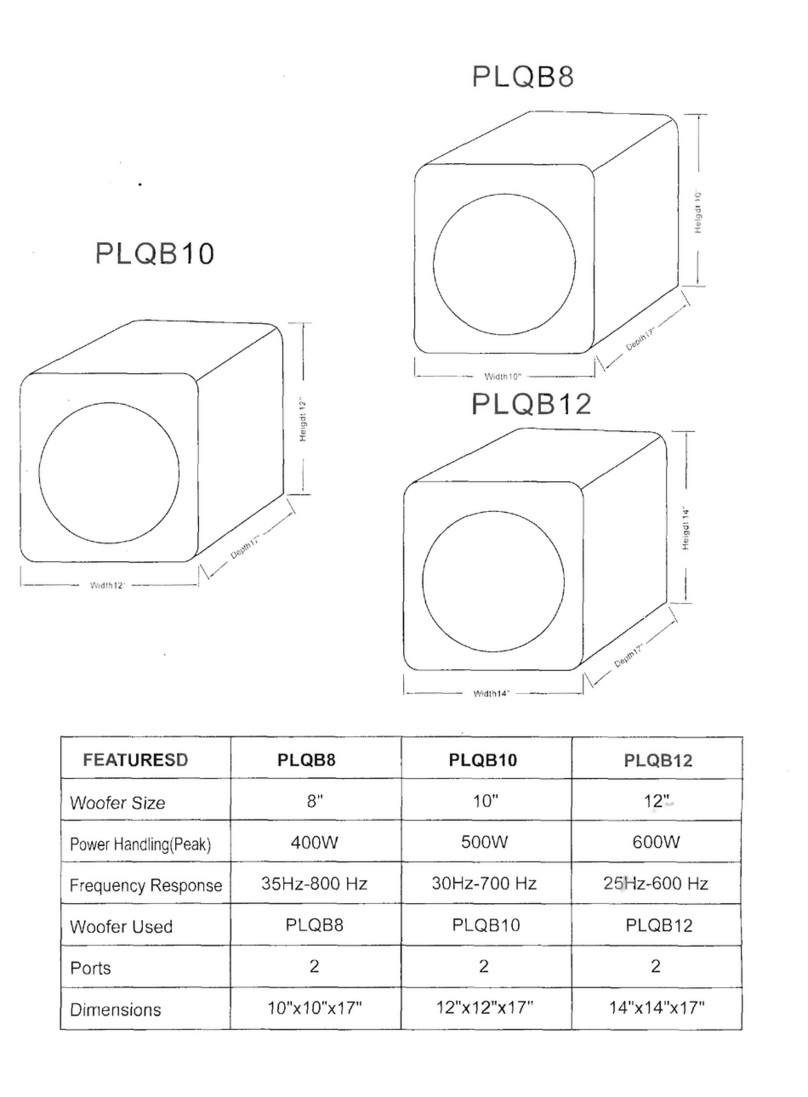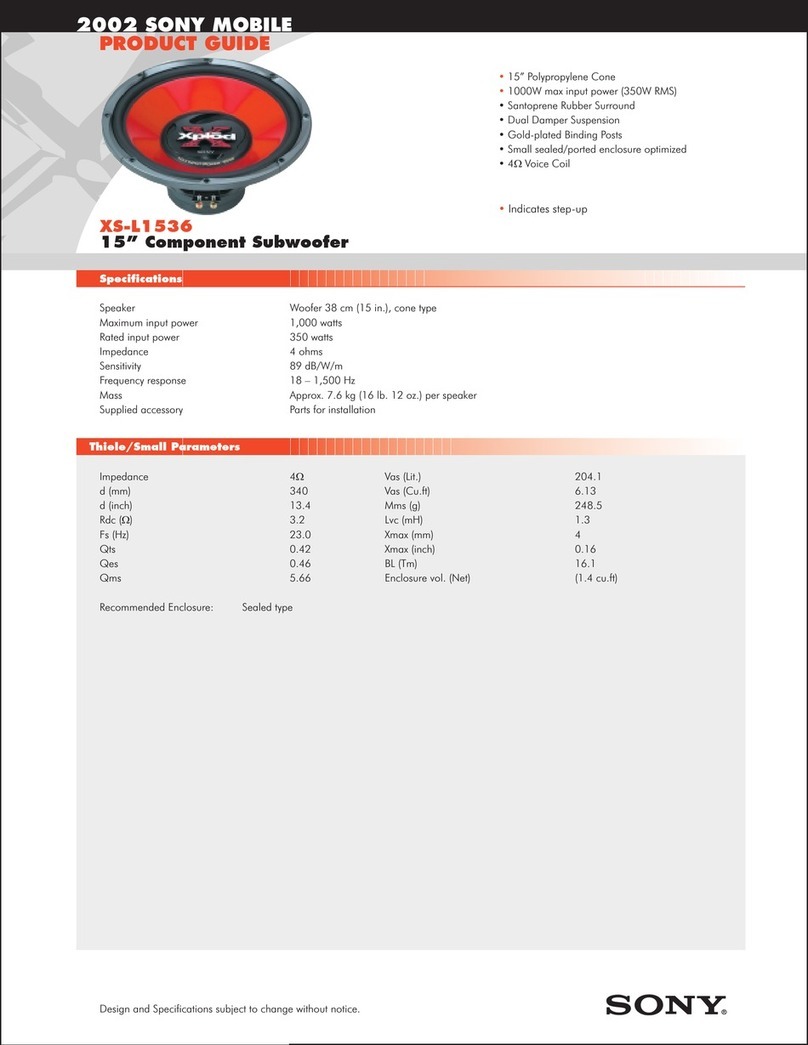
Operating & Controlling Your CP-8
Connecting Your CP-8
Before you make any connections to power up your Couch Potato, please
doublecheckthefollowing:
1. The input power switch 110 AC or 220 AC based on your local
power.
2. Pleasemakesurethatthegain/volumeknobissettominimum.
3. MakesurethatthepowerswitchissettoOFF.
4. Thecrossovershouldbesetto10o’clockposition.
LOWLEVELINPUTCONNECTION
1.LocatetheLINEINRCAontheCP-8amplifier(Fig.1F)
2. Connect the CP-8 to the signal source, i.e.AV receiver. There is no
need to have both RCAs to the signal source since the subwoofer is
often operated in mono signal. If the receiver does not have
adequate signal level, then you may want to use both RCAinputs in
ordertoobtainhighersignallevel.
3. If needed, connect the LINE OUT RCA(Fig. 1E) to another amplifier
to drive satellite speakers (front or rear). The LINE OUT RCA has
highpassfilteredsignalatabout70Hz(5dB/Octavecutoff).
HIGHLEVELINPUTCONNECTION
TheCP-8has aHIGHLEVELINPUTconnection (Fig.1J).For thebest
performance, you might consider RCAconnection if it is available on your
source.Ifnot,thenhighlevelinputwilldo.
1.Sincebassismono,youcanconnectthehighlevelinputofanyofthe
frontspeakerstoyourCP-8.Foreaseofwiring,pickthespeakerthat
is closest to the subwoofer. Simply piggy back a wire from the
speakertothesubwooferandyou’reupandrunning.
Note: The high level input for satellite speakers is fitted with a high
pass filter (70Hz). It is only powered when the main or front speaker
signals are driven into the HIGH LEVEL INPUT (Fig. 1J). These
terminals are marked with red and black to indicate the (+) & (-)
respectively.
2. Adjust the subwoofer low pass filter cut off to near 100Hz at first,
slowly bring down the crossing point until you eliminate any
emanating vocals from the subwoofer.An ideal crossing pint range
from55to70Hz.
3.IncasetheCP-8becomesoutofphasewiththesatellitespeaker,flip
the phase switch to correct the problem (maximum bass is only
achievedwhenthesubisinphasewithrestofyourspeakers).
(!) NOTE: DO NOT USE HIGH LEVELAND RCAINPUTSAT THE SAME
TIME.
AMPLIFIER
- Power Output: 300 Watts
- Frequency Response: 20Hz - 180Hz
- Crossover Frequency: 40Hz - 130Hz
- Crossover Slope: 12dB per Octave
- THD: 0.001% @ 50 Hz.
- Input Impedance: 47,000 ohms
- Input Sensitivity: 50mV to 2.3V
- Power Supply: 115V/230V (50Hz~60Hz)
- Fuse Rating: 1 Amp
Features & Specifications:
SUBWOOFER
- 300 watts 8" subwoofer
- 2" high temperature voice coil
- Durable pressed paper cone
- Long Excursion santoprene surround
- 48oz high density magnet
- 89dB 1W/1M
- FS: 38Hz
- Qts: 0.516
SYSTEM
- Dimensions (H - feet included x W x D):
7” (177.8mm) x 12” (304.8mm) x 24” (601mm)
- Weight: 24.58 lbs / 11.15 kgs
For more technical support, please contact us by:
Phone: 1-800-576-7944
www.earthquakesound.com 3
CP-8 Installation Manual
(!) Do not place the subwoofer in an environment exposed to dust,
excessive moisture or heat. Direct exposure to sun light will over time
deteriorate the enclosure finish and may cause the amplifier to
overheat.
(!) To prevent electrical shock, never open the subwoofer cabinet before
disconnectingthepowercordfromtheamplifier'smainsocket.
(!) In the event of a blown fuse, replace it with a 1 ampere fuse only. Over
fusingvoidsthewarrantyandwilldestroytheamplifier.
Cautions
